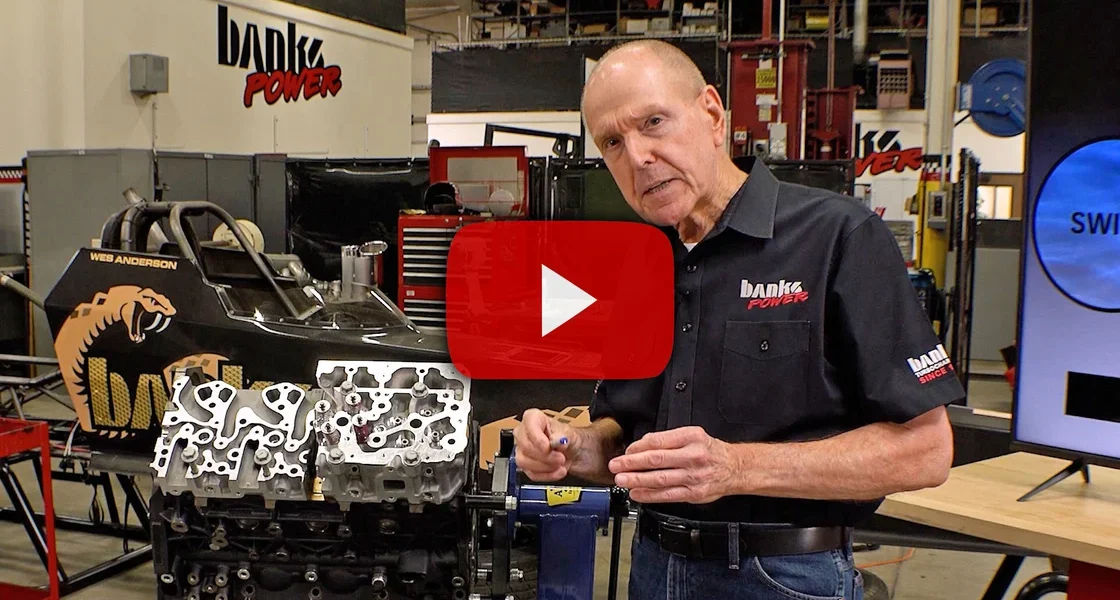How to Screw up Diesel Combustion
Full Video Transcript
00:00 let’s talk about racing engines for a minute let’s talk about cams so aggressive that at top dead center in overlap you want the valves open more than could be afforded with the stock piston profile so you put valve reliefs God knows I built hundreds of engines
00:19 like this but it’s also destroying swirl here’s the Piston before injection occurs it’s rising in the boore density has still been centrifuged out but we’ve got these valve reliefs and here you can see the step this is starting to slow down the air it’s like a break so now
00:39 we’re injecting so you start getting some soot formation and you’re not getting quite the the air fuel mix that we’re really looking for the swirl RPM is cut to virtually zero and the entire diesel combustion process is screwed up
In this clip taken from Killing A Duramax, Ep 14, Gale Banks explains why swirl is so important to Diesel combustion. While ported heads and valve reliefs may increase airflow, they may diminish swirl leading to an incomplete burn and soot output. This educational video is a product of Gale’s quest to develop a new high-speed camshaft for the Duramax L5P. In the full-length video, he reveals why squish and swirl are so important to proper diesel combustion, as well as valve timing, duration, and overlap. He also details why he’s chosen a stock piston over ones with valve reliefs. This is the most information you’ll receive about Diesel combustion outside of engineering school.
For a deeper dive into air measurement errors and their impact on engine tuning, read You’re Measuring Air All Wrongto see why air mass—not volume—is what really matters in performance tuning.

